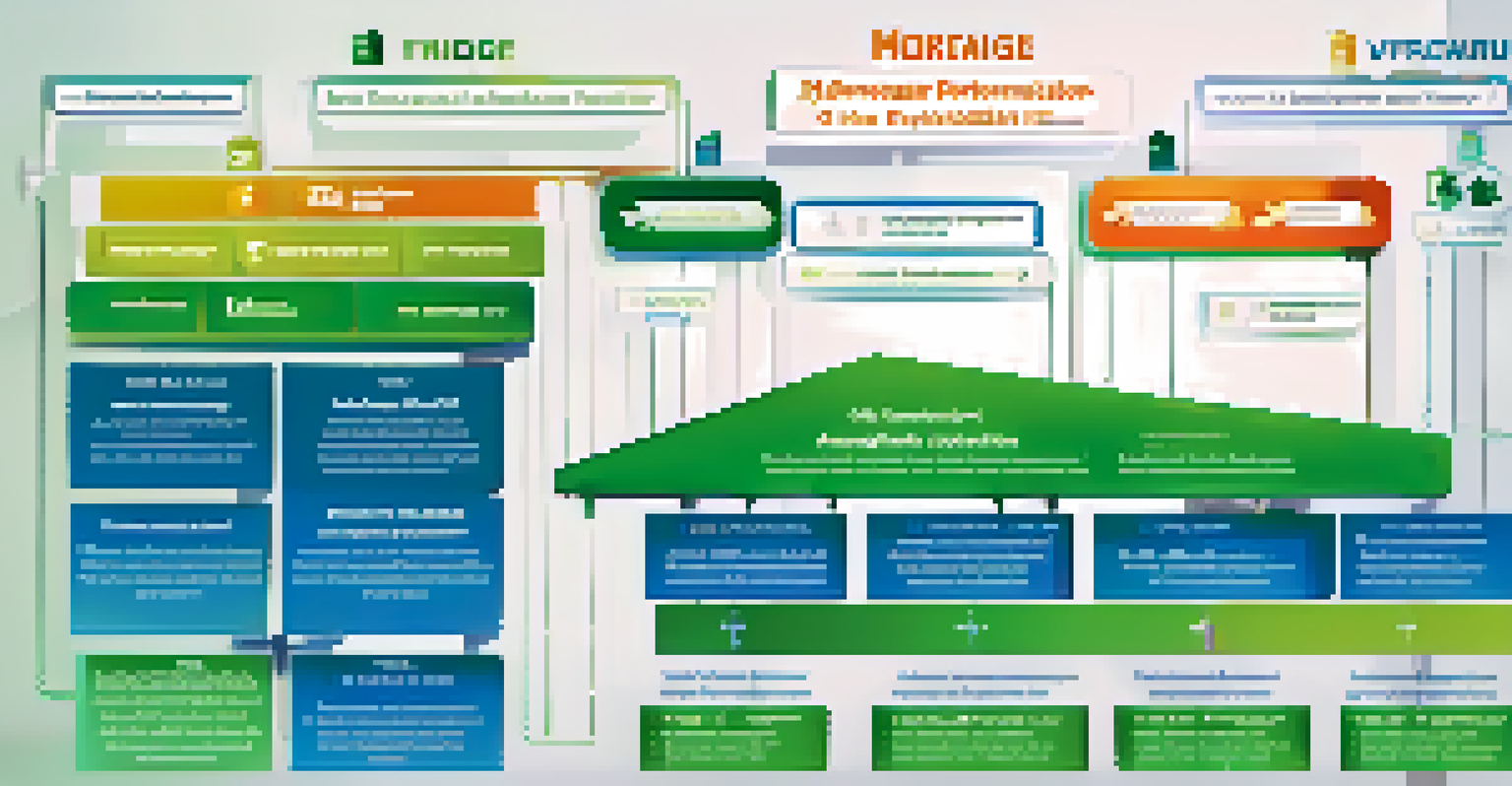How to Make Sense of Mortgage Amortization Schedules

What is a Mortgage Amortization Schedule?
At its core, a mortgage amortization schedule is a table that outlines each payment you'll make on your loan. It breaks down how much of each payment goes toward interest and principal, providing a clear picture of your loan repayment over time. Think of it like a road map for your mortgage journey, guiding you toward full repayment.
A budget is telling your money where to go instead of wondering where it went.
Understanding this schedule is crucial because it helps you see how your payments affect your loan balance. For instance, in the early years, a larger portion of your payment goes toward interest, while later payments shift more toward principal. This shift can be surprising if you're not familiar with how amortization works.
By reviewing your amortization schedule, you can strategize about prepayments or refinancing options, allowing you to save money in the long run. It’s not just a bunch of numbers; it’s a tool to help you manage your finances effectively.
How is an Amortization Schedule Calculated?
Creating an amortization schedule involves some straightforward calculations based on your loan amount, interest rate, and term length. The formula used may seem complex, but don’t worry; many online calculators can do the heavy lifting for you. All you need to do is input your loan details.

Essentially, the monthly payment is calculated using the principal amount and interest rate, which tells you how much you owe each month. This payment stays consistent throughout the life of the loan, making budgeting easier. Understanding this calculation helps demystify those seemingly random numbers on your schedule.
Understanding Amortization Schedules
A mortgage amortization schedule is a valuable tool that outlines each payment and how it affects your loan balance over time.
Once you have your monthly payment, the schedule will show how it breaks down over the life of the loan. This visual representation can be incredibly helpful for tracking your progress toward homeownership.
The Components of an Amortization Schedule Explained
An amortization schedule typically includes several key components: the payment number, payment amount, interest paid, principal paid, and remaining balance. Each of these elements plays a vital role in helping you understand your mortgage better. For instance, knowing how much interest you pay each month can motivate you to pay off your loan faster.
In investing, what is comfortable is rarely profitable.
The payment number is just the sequence of payments over time, while the payment amount is the fixed amount you owe monthly. Meanwhile, the interest and principal paid show how your balance changes, offering insight into how quickly you're paying down your debt.
Finally, the remaining balance indicates how much of your original loan amount is still owed. By examining these components, you can gain a comprehensive understanding of your mortgage and make informed decisions.
Why Understanding Amortization Matters
Grasping your mortgage amortization schedule is essential for effective financial planning. It allows you to visualize your long-term financial commitment and helps you make informed decisions about your money. For instance, if you see that your interest payments are high, you might consider refinancing to a lower rate.
Moreover, understanding your schedule can impact how you approach extra payments. If you can afford to pay a little more each month, you may want to do so to reduce your overall interest paid. This proactive approach can save you thousands over the life of your loan.
Components of Amortization Explained
Key components of an amortization schedule, such as payment number and remaining balance, help you track your mortgage progress and make informed financial decisions.
Ultimately, a solid grasp of your amortization schedule empowers you to take control of your financial future, making your homeownership experience smoother and more rewarding.
Common Misconceptions About Amortization Schedules
One common misconception is that all mortgage payments are equal in terms of principal and interest distribution. In reality, early payments are heavily weighted toward interest, which can be confusing for many homeowners. Understanding this can help you manage expectations and plan your finances accordingly.
Another fallacy is that all loans have the same amortization structure. Different loan types, such as fixed-rate or adjustable-rate mortgages, can have varying schedules. Recognizing these differences is crucial for selecting the right mortgage for your individual needs.
Lastly, some believe that amortization schedules are set in stone. In truth, you can make additional payments or refinance, which can significantly alter your amortization schedule and the total interest paid. Being aware of these nuances can help you make smarter financial choices.
Tips for Managing Your Amortization Schedule
To effectively manage your amortization schedule, start by reviewing it regularly. By keeping an eye on your progress, you can stay motivated and make adjustments if necessary. It’s much like checking your fitness goals; regular monitoring helps you stay on track.
Consider using budgeting tools or apps that integrate with your mortgage data. This can provide a more dynamic way to visualize your payments and see how extra payments might affect your schedule. The easier you make it to access this information, the more likely you are to make informed decisions.
Misconceptions Around Amortization
Common misunderstandings, like the equal distribution of payments, can impact your financial planning and highlight the importance of recognizing individual loan structures.
Lastly, don’t hesitate to consult a financial advisor if you have questions about your schedule. They can provide personalized advice based on your unique situation, helping you make the most of your mortgage.
Resources for Further Understanding Amortization
There are many resources available to help you dive deeper into the world of amortization schedules. Websites like the Consumer Financial Protection Bureau offer thorough guides and calculators that can help you understand your mortgage better. These resources can be invaluable in demystifying the process.
Additionally, local libraries often have financial literacy programs, including workshops on mortgages and amortization. Attending these can provide you with both knowledge and community support as you navigate homeownership.

Finally, consider joining online forums or social media groups dedicated to personal finance. Engaging with others who are on similar journeys can provide tips, share experiences, and offer encouragement as you learn more about your mortgage and its amortization schedule.